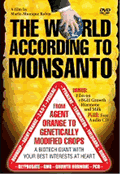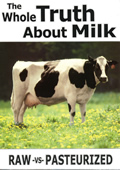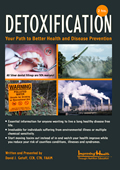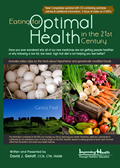CAN VITAMIN D HELP PREVENT H1N1 SWINE FLU FROM SPREADING?
By
Byron J. Richards, CCN
October 14, 2009
NewsWithViews.com
It seems simple enough to understand. A well person contracts swine flu from a sick person, who, once sick, passes it along to another. In the case of H1N1 swine flu, most of the population is not familiar with the virus, thus it has the potential to readily spread from sick to well. Sick people are supposed to quarantine themselves to prevent transmission. Everyone else is supposed to get a vaccine. One small problem – what if the sick people aren’t really the ones spreading the infection? At first glance that sounds preposterous. A second look may cause you to pause and ponder.
Take a journey back almost a hundred years to the last swine flu epidemic, a true killer infection that preyed on young people. An experiment was conducted, one that would not be allowed today. A hundred Navy personnel volunteered. None of them had demonstrated any signs of the flu in the year prior to the experiment. The goal was to prove the swine flu spread from sick to well. The sickest of the sick coughed and sneezed onto some of the volunteers. Others were directly exposed to the mucosal secretions and viral-laden droplets of these very sick people. Surprise – not one of the volunteers fell ill.
While there are many viral illnesses that have been proven to spread from sick to well, such as the measles, the flu is not one of them. In fact, every time scientists try to prove the point, they can’t. Epidemiologists can’t show it either. Rather, science points in the direction that a susceptible population of well people, possibly those deficient in vitamin D, are responsible for the rapid spreading of the flu each year.
A 2008 article published in the Virology Journal by John Cannell, et al., titled On the Epidemiology of Influenza reviews the above Navy study and dives into the data that fails to add up to a clear picture of sick-to-well viral spreading of the flu – flying in the face of public health dogma. You can click on the above link to read the full study. Here are a few of its keys points.
To prove sick-to-well transmission there must be a documented period of time for the transmission to take place, resulting in a chain of sick-to-well events. The flu does not follow such a pattern. In fact, family members who do get sick are often become sick at the same time and the spreading to other family members once isolated in the family unit is low (less than 20%). These are mathematical factors that weigh heavily against the required sick-to-well transmission rates needed to explain the rate of transmission taking place in a typical seasonal flu outbreak.
Other factors about the flu are equally puzzling. Why is it mostly seasonal? Why does an outbreak end abruptly? Where does the flu virus go between seasons? If true sick-to-well transmission were the key then it would support a never-ending sequence of transmitted infection, not seasonal patterns. Animal studies show that “well” animals, at least some of them, are very good at transmitting the flu virus. Obviously, something else is going on that helps a virus spread.
Any flu is most likely to spread at accelerated rates during the winter months, the time of the year when vitamin D is not available from sun exposure. As more sunshine re-appears on the scene the flu goes away. Or maybe it just becomes dormant in the host as vitamin D levels rise to a point where the human immune system can keep it in check – just waiting to reactivate en-masse during the next winter season of vitamin D deficiency. Cannel reviews the science on this issue in a 2006 article, Epidemic Influenza and Vitamin D. He makes the point that “well people” who are deficient in vitamin D could easily be behind the rapid spreading of any flu – something not likely to occur if the population were adequate in vitamin D.
Emerging science is on Cannel’s side. A recent systematic review of all vitamin D randomized controlled trials found that vitamin D studies provided strong support for influenza and viral upper respiratory tract illnesses.
Over the last few years it has been progressively documented that vitamin D is responsible for the production of an antibacterial peptide called cathelicidin. Cathelicidin is vitally important to protecting against respiratory disease. Furthermore, a new genomic study has shown that vitamin D-related cathelicidin production has been genetically preserved for 60 million years in humans – offering a tremendous immune system advantage to fight bacteria and viral infection. Cathelicidin is also an immune system signaling molecule, extending far beyond its initial role as a potent bacteria killer and placing it squarely in the middle of your overall immune response, including the response to viral infection. Cathelicidin production can be increased by taking vitamin D supplements.
Newer science has also demonstrated that vitamin D is the key nutrient that allows immune system tolerance that is required by the dendritic cells of your immune system to fight off any nasty viral infection. I explain this in great detail in my article, Using Nutrition to Help Perceive and Combat Swine Flu.
Furthermore, vitamin D helps downplay excessive TNFa (an inflammatory cytokine). This is vitally important because you must activate TNFa to fight a flu virus like H1N1 that your immune system has not seen before. If TNFa is already activated from excessive stress, being overweight, or some other inflammatory pre-existing condition like asthma, arthritis, or neurologic problems, then the needed TNFa reaction to fight the flu is handicapped. TNFa-blocking drugs, commonly used for arthritis and other autoimmune problems, are a nightmare in this context.
The vitamin D data is very clear that a lack of vitamin D compromises innate immunity, making it easier for someone to get H1N1 swine flu, including a more serious case of it. Collectively, when this data is combined with what Cannel is saying about the epidemiology of flu, it does support his argument that people lacking vitamin D may be a prime reason for the seasonal spreading of the flu – even if they themselves are not noticeably sick.
It would be quite a stretch to say that a lack of vitamin D alone causes the flu or that taking adequate vitamin D will guarantee that you don’t get the flu. Rather, a lack of vitamin D is one factor that is easy to change and likely to contribute to a population of citizens less likely to rapidly spread the flu from one to another, in addition to helping individuals fight the flu or get a less severe case of the flu. From a public health point of view a recommendation to be vitamin D adequate is plain common sense – yet where are the public health officials on this very important topic?
There is certainly no point in being vitamin D deficient, as are 70% of the children in America. I highly recommend a base dose of 2000 IU all winter long, as I explain in my article, Vitamin D - A Gene Regulating Super Nutrient. Certainly, any individual worn down from stress, who is overweight, or who is dealing with some type of inflammatory situation may benefit from a baseline dose up to 5000 IU per day.
Cannell points out that a single dose of sun exposure can produce as much as 20,000 IU of vitamin D in one dose. He also believes that much higher doses can be very safely used to fight an infection for a short period of time`. He suggests using up to 2,000 IU for each kilo (2.2 pounds) of body weight, up to seven days. I personally have no experience using vitamin D at that dose to help combat the flu – he obviously does. He suggests taking enough vitamin D on a regular basis to maintain your 25(OH)D blood levels above 50 ng/ml all year around (your doctor can easily test your vitamin D levels).
In clinical practice I have found a daily dose of vitamin D ranging from 2,000 IU - 5,000 IU to be of extreme help to immunity in the winter months – especially for the person whose symptoms linger or is prone to catching anything.
|
Subscribe to the NewsWithViews Daily News Alerts! |
The Vitamin D story is not only far from over, it is just beginning. Science keeps chipping away at the pieces of the puzzle. You can imagine vitamin D sitting back in its rocking chair chuckling at all the detective efforts trying to figure out what it has been doing for the past 60 million years. Never underestimate the power of nutrition to provide a competitive survival advantage – especially against nasty viral infections that have coexisted with humans during evolution of our gene programs. The current H1N1 swine flu is not the first time in history the human immune system encounterd a virus it had never seen before.

















